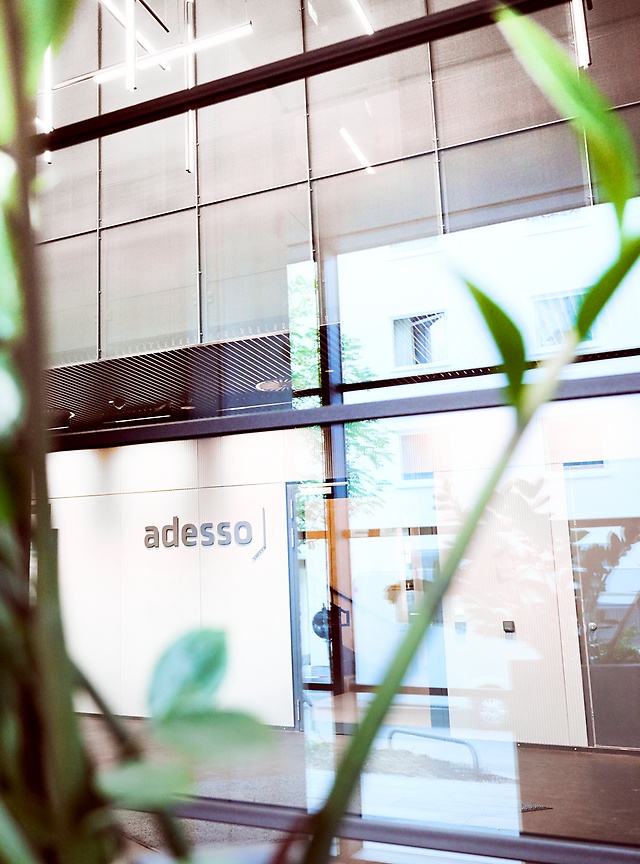24. July 2023 By Simon Bächle, Zoe Holdt and Timo Hartmann
More than just a contract – power purchase agreements as a driver for innovation
What are power purchase agreements (PPAs)?
Power purchase agreements (PPAs) refer to special electricity supply contracts concluded between power plant operators and electricity consumers. They regulate the long-term supply and purchase of fixed quantities of electricity, often with a term of between five and twenty years, as well as how these are billed. The electricity producer undertakes to generate or purchase a certain amount of electricity and to supply it to the customer. The buyer, in turn, undertakes to purchase the electricity supplied over a fixed period of time at an agreed price model. They are often used for planned large-scale investments in the construction or continued operation of renewable energy plants and are already widespread today, especially in the US.
PPAs offer a number of advantages for both contracting parties. While the reduced dependence on the electricity market – and in some cases strongly fluctuating electricity prices – means consumers can enjoy a high degree of planning security, it also offers electricity producers economic advantages. The fact that the electricity they generate is guaranteed to be purchased both reduces their operating risk and increases their creditworthiness. In turn, this makes the projects more secure, easier to plan and possibly even more profitable.
Electricity from renewable energies has been subsidised by the levy under the German Renewable Energy Sources Act (Erneuerbare-Energien-Gesetz, EEG) since 2000. Green electricity is subsidised with a fixed feed-in tariff and provides investment security for the expansion of solar, wind, biomass and hydropower plants. In order to be eligible for EEG funding, companies that want to construct new, larger plants (for example, PV power plants with a rated output of one megawatt or more) must successfully participate in a tender process. Alternatively, the construction of new plants can be financed without the EEG levy by selling the power plant output to a buyer in advance through PPAs. New construction projects are not the only plants for which PPAs can be an attractive option. This is because the EEG levy expires after twenty years, meaning the plants no longer receive feed-in tariffs and must choose a new marketing option. These ‘post-EEG plants’ can continue to sell their electricity using PPAs.
Companies can help work towards achieving their sustainability goals and underline their commitment to protecting the environment and using renewable energies by purchasing green electricity with a guarantee of origin. By guaranteeing the purchase of green electricity, they actively contribute to the further development and operation of wind and solar plants.
What types of power purchase agreements are there?
All PPAs can be divided into merchant and corporate PPAs. The former is an electricity supply agreement between a supplier and an electricity trader; the latter is an agreement concluded between electricity producers and a company acting as the end consumer.
On-site PPA
An on-site power purchase agreement is when the supplier physically provides the electricity directly to the consumer. This requires the producer and the consumer to be in close proximity to one another, as this type of agreement involves the power plant and the consumer being connected directly to each other via a cable. The power plant is not connected to the public grid and is located behind the consumer’s metering point (the place where the electricity is measured), for example on the consumer’s company premises. This direct electricity connection generally eliminates the need to pay grid fees, as the electricity generated does not use the infrastructure of the distribution grids. The size of the plant and the volume of the power purchase agreement depend heavily on the load profile of the buyer (such as an industry) and are usually designed individually. In most cases, the on-site PPA does not cover the entire demand, meaning that the rest of the electricity (residual electricity) has to be purchased from an energy supply company via the public grid. All on-site PPAs are corporate PPAs, as the buyers always represent a consuming company.
An example to illustrate this is industrial companies with an area that can be used for electricity generation (for example, a covered car park, a hall roof or an open area) that want to reduce their electricity costs. However, businesses often do not want to install a photovoltaic system themselves and bear the risks that come with it. Instead, they enter into an on-site PPA with a project developer who builds the photovoltaic plant and sells the electricity generated to the industrial company.
Off-site PPA
Off-site power purchase agreements allow for the on-balance-sheet purchase of a predefined amount of electricity delivered by the supplier to the consumer via the public grid. This means there is no need for the generation plant and the consumer to be physically close to one another. This offers flexibility in the choice of locations for power plants. For example, offshore wind plants in northern Germany can sell electricity to industries in southern Germany. Furthermore, multiple buyers can be supplied through different PPAs. A fixed electricity price is agreed in the PPA, which offers long-term price security. Charges and grid fees continue to be paid to the grid operator.
As an example, a company in a city could conclude an off-site PPA with a project developer who operates a solar park in a rural region. The project developer supplies the agreed amount of electricity to the company via the public grid without direct physical delivery.
Sleeved PPA
A sleeved power purchase agreement is a variant of the off-site PPA in which an energy service provider acts as an intermediary between the supplier and the consumer. In addition, the PPA provider offers various services:
- Balancing group management
- Purchasing of residual electricity quantities and the sale of surplus electricity
- Preparing feed-in forecasts
- Dealing with certificates of origin (green power certificates)
- Aggregation of different electricity generators into one plant portfolio
- Assumption of balancing energy costs or default risks
These services make a sleeved PPA a comprehensive solution for companies looking to optimise their energy purchase contracts.
Synthetic/virtual PPA
The fundamental difference in a synthetic (or virtual) PPA is that there is no physical delivery between the supplier and the buyer, only a financial agreement. These types of solutions are mainly found in off-site PPAs due to the fact there is no physical element to the delivery. As with any PPA, the seller and buyer agree on a price for a fixed amount of electricity, but this is supplemented by a contract for difference (CfD). In a CfD, the fixed price is compared with the variable stock market price. To ensure that neither party suffers any disadvantages from the synthetic PPA in the event of both rising and falling exchange prices, the CfD ensures that the difference is paid to the other party.
The challenges and risks of power purchase agreements
The contracts on which PPAs are based are often not standardised. It is therefore necessary to have extensive knowledge of the energy industry and contract law in order to conclude meaningful and legally valid PPAs.
Selecting the PPA partner poses another challenge. The risks and complexity involved with PPAs make finding a suitable partner who is willing and able to help manage these challenges together an absolute must. If several different partners are involved in the PPA, then negotiations can become protracted and the risks due to mutual dependencies must be contractually regulated.
Although PPAs are designed to provide price security, they can have negative aspects for both the seller and the buyer. If a PPA is concluded at a fixed price, this can be disadvantageous for the seller if market prices rise sharply. On the other hand, sharply falling market prices can be disadvantageous for the buyer. PPAs often have a long duration, typically ten to twenty years. This means that in the case of a fixed price, the contracting parties bind themselves to the agreed conditions and prices for a considerable period of time. That is why an increasing number of these types of agreements set out a price corridor, which allows prices to develop within a firmly defined framework and thus reduces the disadvantages of a fixed price.
It is also clear that the success of PPAs depends in part on the contracting parties having a smooth collaboration. The risk and the complexity involved should ideally be managed together.
Examples of successful power purchase agreements
Microsoft and Google have reached agreements to use renewable energy in their data centres to reduce their CO2 emissions. Google has struck a deal with a French utility company for 100 megawatts from a Scottish wind farm to power its UK operations with clean energy. At the same time, Microsoft has entered into its own agreements in Ireland that include more than 900 megawatts of newly installed renewable power capacity to power the data centres there. The exact suppliers were not disclosed, but it is reported that the energy comes from a combination of wind and solar projects. Both companies are hoping to run their data centres in Ireland entirely on renewable energy by 2025 and 2030 respectively, making a significant contribution to the use of zero-emission energy.
So far, mainly larger power plants (larger than 100 kilowatts) have been marketed through PPAs, but there is increasing interest in the PPA marketing of power plant capacity from small, decentralised generation units. These units have been too small up to this point and are therefore not suitable for this form of marketing. Virtual power plants may be a solution here, as they can bundle the decentralised small plants into a virtual pool using software, creating a larger and thus sufficient power plant capacity for PPA marketing. A virtual power plant of this kind is being developed and research is being carried out into concepts for operating very small plants within a financially viable framework as part of the VideKIS research project, which is funded by the German Federal Ministry for Economic Affairs and Climate Action (Bundesministerium für Wirtschaft und Klimaschutz, BMWK) and the adesso Innovation Fund.
Power purchase agreements thus create stable conditions, planning security and a sustainable energy supply for both plant operators and electricity consumers. They offer a win-win situation in which the profitability of plants is increased and companies can achieve their environmental goals.
You can find more exciting topics from the adesso world in our blog articles published so far.
Also interesting:



